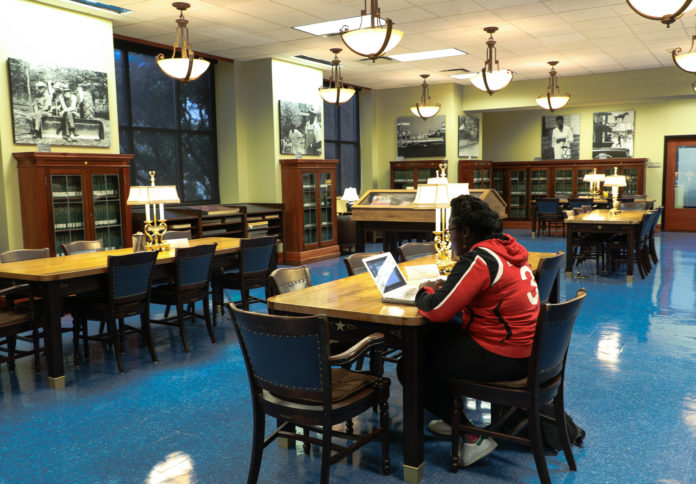
By Jessika Harkay | Reporter
The Texas Collection is home to over two million digital and print photographs, 36,000 oral history tapes and transcripts, 13,000 audio visual pieces and sits just off the heart of campus and Fountain Mall.
Geoff Hunt is the primary caretaker for the Texas Collection. A Baylor graduate, Waco Native and son of a photographer, Hunt has been the audio and visual curator to the collection for the last 14 years.
“It’s vital to those in the future that wanna look back and say, ‘Okay, well this street, this building, this event, whatever, how did it become what it is now?’” Hunt said. “You can look at all photography and photographs to get a sense of the evolution or progression of a topic throughout time. It educates us more on the present day, being able to look back on photographs, and helps fill in a lot of gaps where the written record may not suffice. So, visuals are very, very important.”
What began as a donation of several-hundred items on Texas history from Waco physician Dr. Kenneth Hazen Aynesworth in 1923, has now expanded to a collection that takes up three floors of Carroll Library and four floors in Morrison Constitution Hall.
A large number of the Texas Collection’s photographs capture Baylor, but it doesn’t just stop at the university. The oldest photos in the collection date back to 1840 in the earliest form of photography called Daguerreotypes.
Named after its creator Louis Dageurre, a French artist, Daguerreotypes were groundbreaking for creating a permanent photographed image. A photographer would polish a sheet of silver-plated copper to create a mirror-like surface.
Topped with iodine, and other chemicals, the sheet would be exposed in a camera with sunlight to produce an image. Afterwards, the image would be put into a mercury solution to fix the image permanently.
Including the 1840 Daguerreotypes, the collection also holds records from the 1900s to current day from various countries.
“We have everything from Waco, to Waxahachie, Wales and the United Kingdom. We have things from all over the world,” Hunt said. “So these are things that we sort of accumulated lab missionaries, Baptist missionaries to Brazil, for example, or some of the Asian nations. We get photographed collections, so they have a little bit of everything.”
With a variety of information and photographs available to the Baylor community, photography and journalism professor, Clark Baker, said the collection holds “tremendous value.”
“I think that in the future, certain photographs that may not seem to be pertinent or connected to something specific, may turn out to be quite valuable. It’s a vast collection,” Baker said. “I can’t imagine that scholars wouldn’t be able to use those resources in research upcoming, you know, to make connections that haven’t been considered before perhaps. We not only talk about it in class, of course, but it’s remarkable to be able to look back at Baylor and wake up and see how much it has changed.”
The collection has been used in multiple ways across the Baylor and Waco community Hunt said. For example, local business owners can use the records to ask for grants to restore buildings, but more importantly, use the photographs to reminisce and keep memories alive.
“There’s a case where I recently helped somebody find a photograph of a Waco bakery, and this person was interested in the photograph of it from the 1950s. I was able to grant that request, and took that person back in time,” Hunt said. “If somebody hadn’t saved that particular photograph, it wouldn’t have. It’s serving a purpose now 70 years later, or so. So you never know how a photograph will move somebody or affect somebody, or really help somebody with a memory or a work in progress or there, they’re just so valuable.”
Baker said he agreed that the value in the photographs is the ability to take people back in time. He also acknowledged with readily available photos because of technology, it’s important to take advantage of the collection and how far the media has come.
“Well, I think they’re the type of photographs that you need to spend time with when we’re looking at photographs on our phones. We look at them very quickly. We don’t consider them deeply,” Baker said. “The medium itself is so quick and so spontaneous in how we take pictures and who we send them to. The photographs in the Texas collection deserve to be looked at deliberately and carefully. It’s a different way of consuming or appreciating photographs.”





